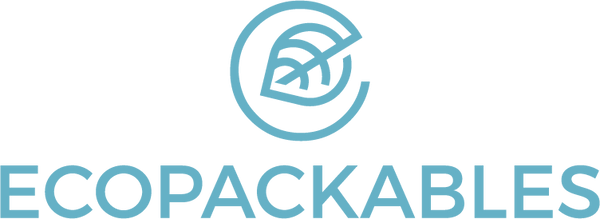In an era of heightened environmental consciousness, the choices we make about packaging materials play a pivotal role in shaping the future of our planet. With the ever-growing concern for the ecological impact of packaging waste, the search for sustainable alternatives has intensified. As we delve into the world of sustainable packaging materials, we encounter three prominent frameworks: recycled plastic, recycled paper, and compostables. While many are quick to inquire about the single most sustainable option, the reality is far more nuanced. The path to sustainability is paved with diverse goals and financial considerations that must be weighed carefully.
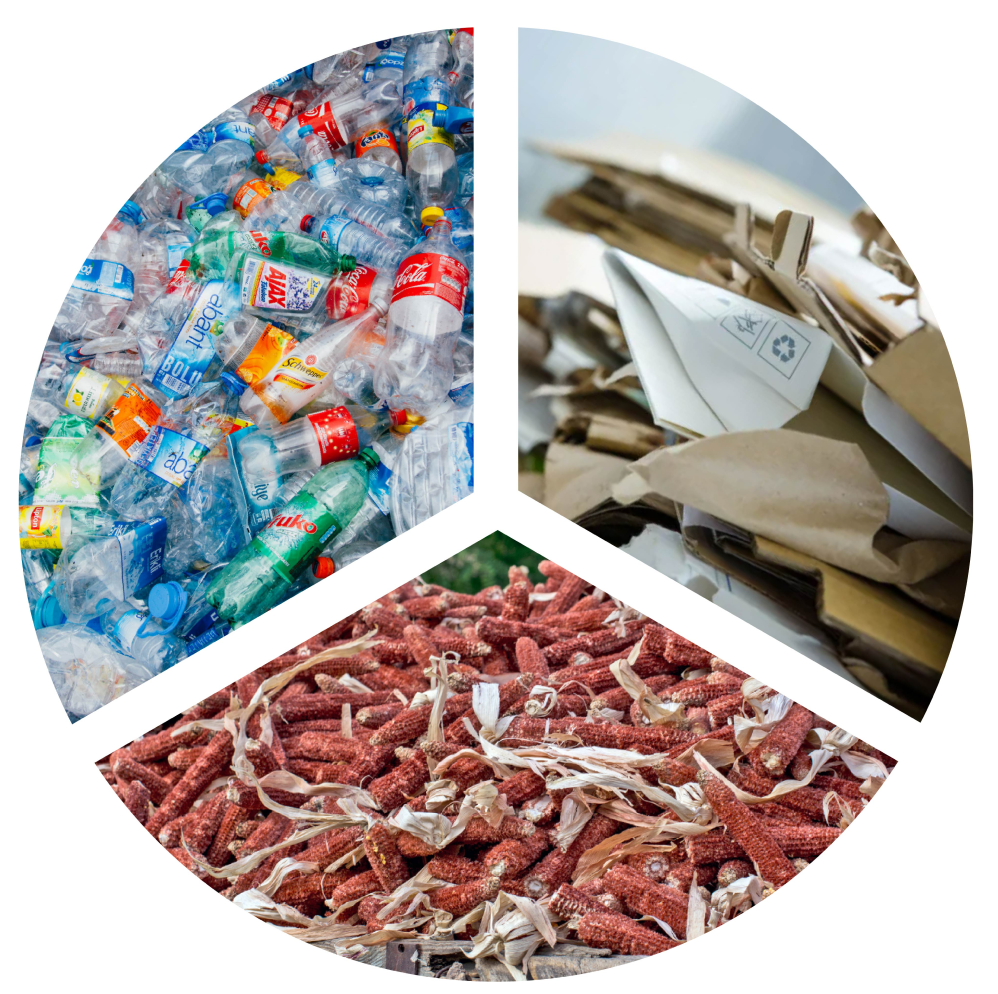
Sustainability goals
These diverse sustainability goals provide a roadmap for conscientious decision-making in the realm of packaging materials. Whether the focus is on carbon neutrality, plastic-free solutions, or resource conservation, understanding these objectives empowers individuals and businesses to choose packaging materials that best align with their values and aspirations. By embracing these goals, we embark on a collective journey toward a more sustainable and harmonious coexistence with the environment.
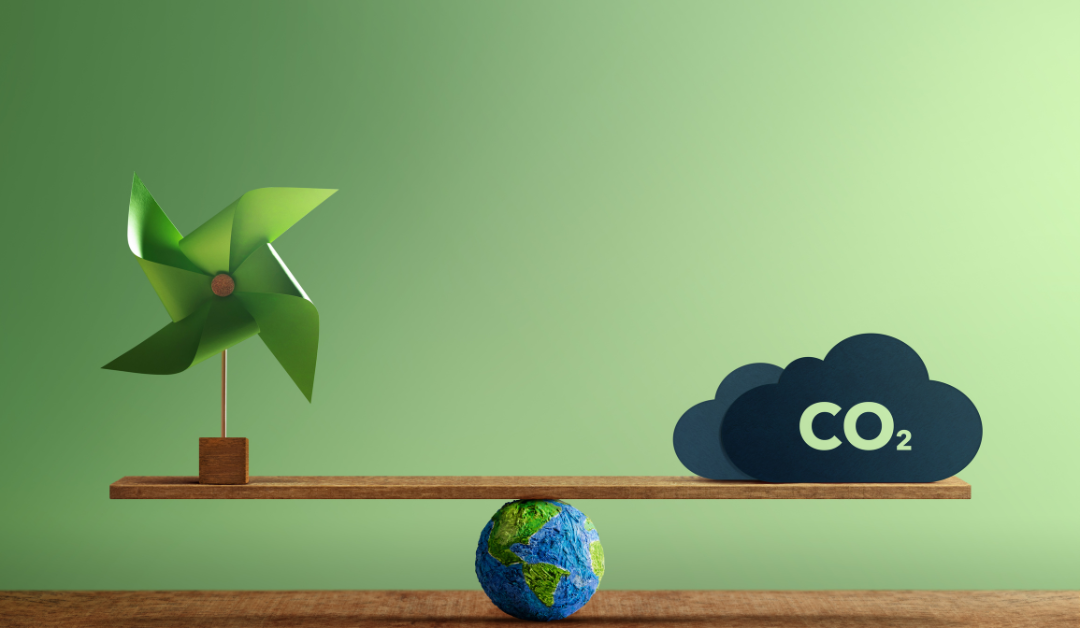
Carbon Neutrality
The pursuit of carbon neutrality has emerged as a paramount goal in the realm of sustainable packaging. With the looming threat of climate change, reducing carbon emissions has taken center stage. Packaging materials that prioritize carbon neutrality seek to minimize the overall carbon footprint associated with their production, transportation, and disposal. Recycled plastics, by diverting discarded plastic from landfills and reducing the energy-intensive processes required for virgin plastic production, contribute to a lower carbon footprint. Similarly, recycled paper, with its potential to sequester carbon and decrease the demand for virgin pulp, aligns well with carbon neutrality objectives. Compostable materials, through their ability to break down into nutrient-rich soil amendments, can also support carbon neutrality by reducing the methane emissions often associated with organic waste in landfills. Selecting packaging materials that align with carbon neutrality goals is a strategic step toward a more sustainable and climate-resilient future.
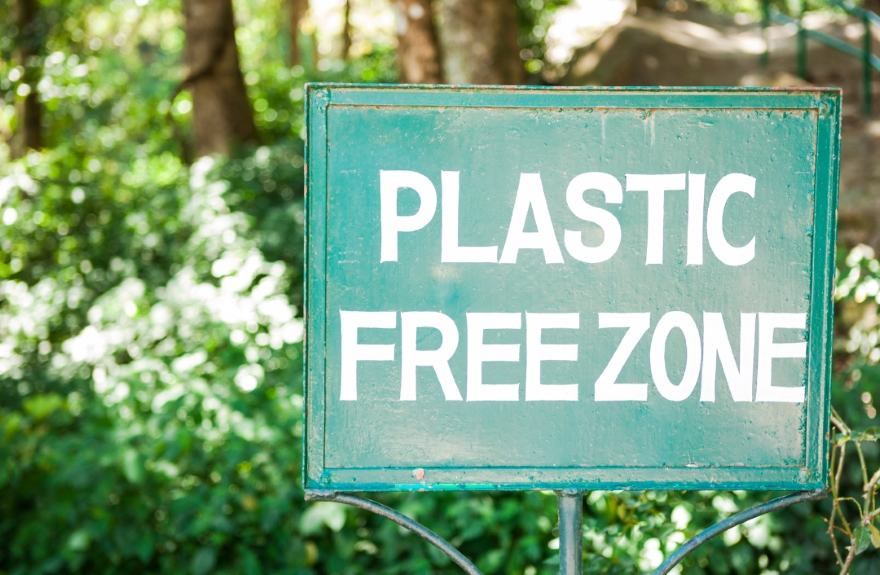
Plastic-Free
For those aiming to make a resounding statement against the plastic pollution crisis, the pursuit of a plastic-free packaging strategy is paramount. The ubiquitous nature of plastic waste has spurred a global movement to eliminate single-use plastics from circulation. Recycled paper emerges as a strong contender in this endeavor, offering a renewable and biodegradable alternative that minimizes plastic usage while maintaining packaging integrity. Compostable materials, derived from organic sources, contribute to plastic-free goals by breaking down naturally and leaving behind minimal ecological impact. While recycled plastics can be an effective solution when seeking to reduce plastic waste, they may not fully align with the plastic-free narrative due to their continued use of plastic, even if in a repurposed form. As the fight against plastic pollution rages on, embracing packaging materials that embody plastic-free principles resonates with a growing movement dedicated to safeguarding our oceans and natural environments.
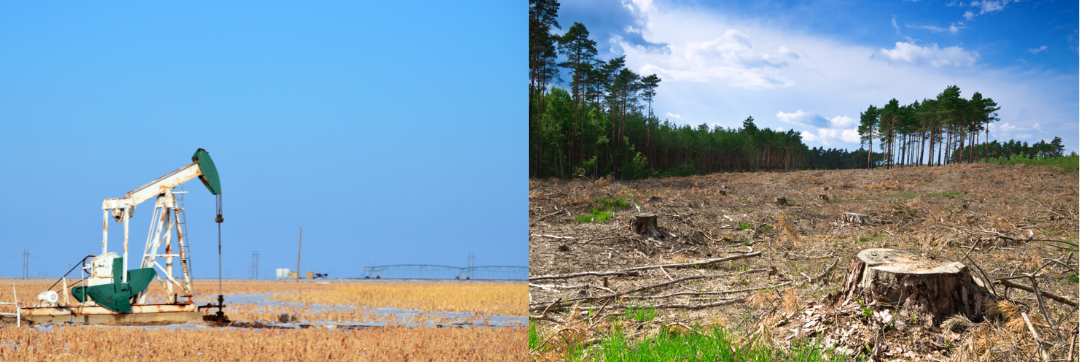
Resource Conservation
In a world characterized by finite resources, the imperative to conserve materials and reduce waste has gained momentum. Recycled plastics shine in this context, as they give new life to existing plastic resources, lessening the demand for virgin materials and mitigating the depletion of fossil fuels. Additionally, the adoption of recycled paper offers a sustainable alternative by decreasing the reliance on fresh timber resources and minimizing the environmental impacts of deforestation. Compostable materials, while providing a natural end-of-life solution, contribute to resource conservation by enriching soil health and fostering a circular economy where waste is transformed into valuable compost. By aligning with the objective of resource conservation, packaging choices can aid in preserving our planet's delicate balance and ensure a more sustainable use of the materials that sustain us.
compostable

One of the most promising advancements in packaging is the emergence of compostable resins and films, representing a transformative step toward sustainability. We are proud to offer our D42 Film, a certified Home-Compostable solution crafted from a unique blend of PBAT and cornstarch made from corn no longer fit for human consumption. This innovation is underscored by certifications from TUV and ABA, attesting to its ability to break down completely within 180 days in a home composting bin or within 90 days in industrial composting facilities. Compostable materials resonate strongly with the plastic-free advocacy goal, addressing the growing concern over plastic pollution.
These materials align with the objective of reducing plastic waste, as they naturally decompose into harmless elements, leaving behind minimal ecological impact. It's important to note that some compostable materials, like PBAT (partially made from fossil resources), are undergoing ongoing research and development to enhance their sustainability. By supporting and demonstrating demand for these materials, such as EcoPackables' D42 Film, we contribute to the drive for their continual improvement and the realization of their ideal future versions.
Their shelf life is contingent upon proper storage in a dark, dry environment, ensuring they retain strength for global parcel shipment over 9-12 months. The incorporation of compostable materials not only bolsters plastic-free aspirations but also embodies the broader ambition of minimizing packaging waste's environmental footprint.
Recycled plastic
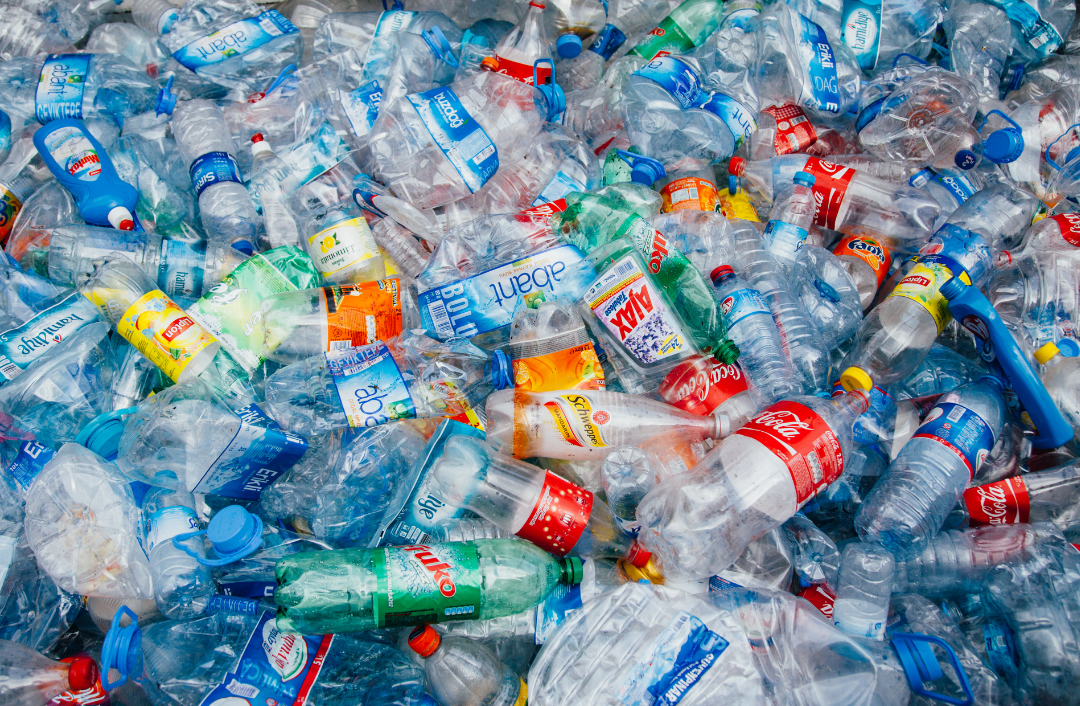
When it comes to using recycled plastic, there are several considerations that need to be made. In an ideal world, we’d like to be using a high amount of Post-Consumer Recycled (PCR) waste. This is plastic waste that recyclers collect after a consumer uses a product. At EcoPackables, we then mix this with a smaller portion of Pre-Consumer Recycled waste (plastic scrapings from production) to create a 100% Recycled Film. This product is our D38 Film, and it is certified by the Global Recycling Standard.
Using recycled plastics aligns closely with both carbon neutrality and resource conservation sustainability goals. By incorporating PCR waste into the production process, the reliance on virgin plastic materials is significantly reduced. This reduction in demand for new plastic production helps decrease the carbon footprint associated with the energy-intensive processes required for virgin plastic manufacturing. Furthermore, recycling plastic waste diverts it from landfills, reducing methane emissions and conserving valuable resources. The use of recycled plastics in the D38 Film by EcoPackables, certified by the Global Recycling Standard, epitomizes the synergy between carbon neutrality and resource conservation. By utilizing recycled plastic materials, this approach supports a circular economy where waste is repurposed into new products, thus contributing to both carbon emission reduction and resource preservation.
Recycled Paper
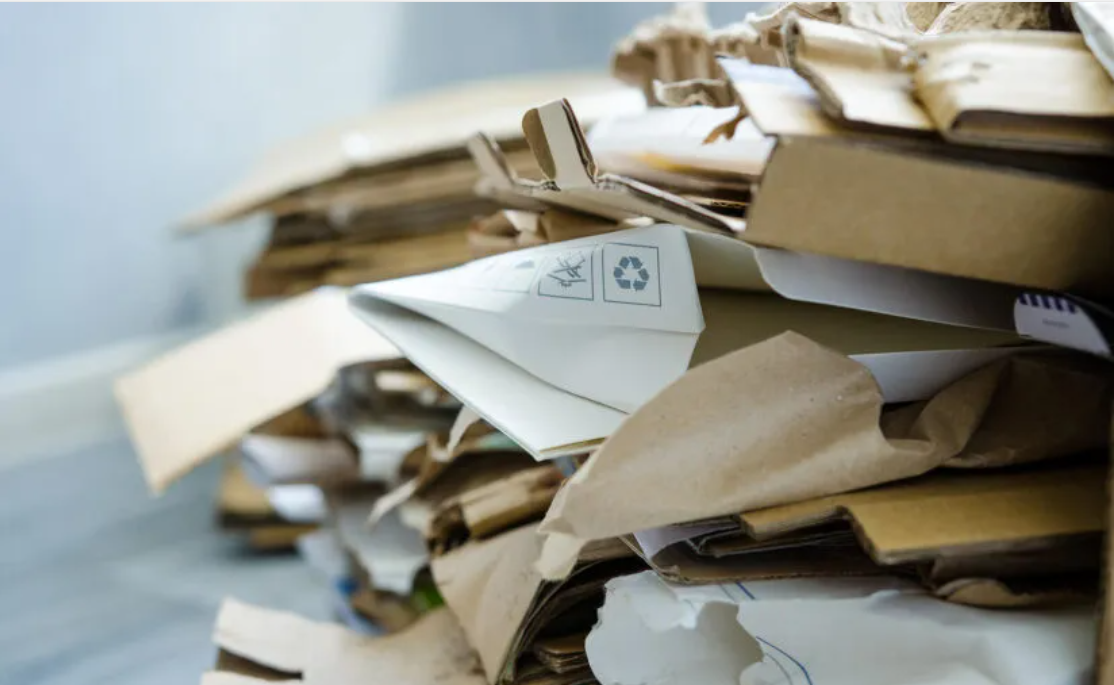
In response to the rising tide of environmental consciousness and the consumer shift away from plastic, apparel brands are embracing Post-Consumer Recycled (PCR) paper packaging. This strategic move aligns seamlessly with plastic-free advocacy, as consumers increasingly seek curbside recyclable alternatives. Notably, the endorsements of organizations such as the Forest Stewardship Council (FSC) and the Sustainable Forestry Initiative (SFI) validate the commitment to responsible sourcing, ensuring that the paper originates from sustainably managed forests. The adoption of 100% recycled paper aligns with curbside recycling programs and represents a plastic-free, eco-friendly solution. Recycled paper packaging outperforms virgin paper in terms of energy and water usage, significantly reducing the need for resource-intensive extraction, refining, and manufacturing processes. Recycled paper also consumes substantially less water during its production compared to the water-intensive processes required for virgin paper. While initial costs may vary, recycled paper offers a competitive edge in the long term, as economies of scale and increasing demand drive further efficienciescontinue to drive down prices. As a renewable resource, recycled paper supports circularity and curbs waste, with end-of-life options ranging from recycling to composting, depending on specific compositions. By embracing recycled paper packaging, brands not only address plastic pollution concerns but also make substantial strides toward meeting a variety of sustainability goals, including plastic reduction, responsible resource management, and waste minimization.
Comparison

Conclusion
-
In our quest for greener packaging, it is essential to acknowledge that no solution is perfect. Each material possesses its own set of advantages and challenges, underscoring the necessity for ongoing research and development. By choosing these alternatives, advocating for their wider adoption, and educating ourselves and others about their benefits, we contribute to a growing demand for better options. Moreover, through active engagement with policymakers and legislators, we wield the power to effect change on a systemic level, fostering an environment conducive to sustainable practices.In this dynamic landscape, the onus rests upon us to drive the industry forward, pushing the boundaries of possibility and refining our approach to packaging. By embracing these materials, advocating for their potential, and collectively championing sustainability, we pave the way toward a future where packaging harmonizes with the health of our planet and the well-being of generations to come.
-

